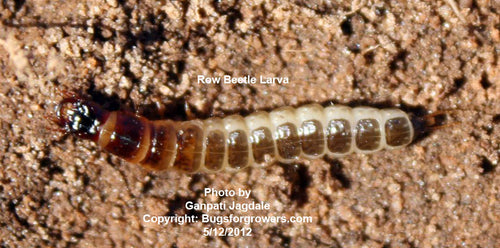Fungus Gnats
Damage
Fungus gnats (Bradysia spp.) larvae are considered as one of the most damaging pests of both indoors and greenhouse plants. The larval stages (maggots) of fungus gnats cause direct damage by feeding on roots of plants whereas their adult flies (Photo 1) cause indirect damage by disseminating disease causing fungal spores from plant to plant as they disperse through the greenhouse. The maggots primarily feed on fungi and organic matter but they can also cause a serious damage to many ornamental plants. Maggots often chew or strip plant roots and tunnel stems affecting water and nutrient absorption in severely injured plants resulting in lost vigor, turn off-color and eventually death. During feeding maggots also transmit fungal pathogens like Fusarium, Phoma, Pythium and Verticillium. Adult flies are also nuisance to people and employees.
Photo 1. Fungus Gnat Fly
Facts (show all)
- Taxonomy
- Identification
- Biology
- Biological control
- Beneficial predatory mites
- Beneficial entomopathogenic nematodes
- Research Papers

